This is a drawing depicting the motions in earth's atmosphere.
Click on image for full size
Image from: Random House Atlas
Motions in Neptune's Interior
Motions in the interior of a planet help carry heat from the inside to the outside.
The drawing to the left illustrates a kind of global motion that is typical of motions in the atmosphere as well as interior of a planet. Material rises from where it is warmest, and moves in a roiling motion like the boiling of a pot. In the drawing, there are three different cells of activity in the atmosphere where the air turns over (depicted by red sheets).
In the interior of Neptune, the ice layers are warm enough to move in this fashion. However, some scientists think that the interior of Neptune may have a different sort of motion. The magnetosphere of Neptune seems to be produced by motions in the icy layers inside Neptune.
You might also be interested in:
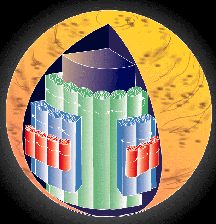
Motions in the interior of a gas-giant planet such as Neptune may be very different from the motions within the Earth. A second idea for the motions in the interior of a gas-giant planet is shown in this
...more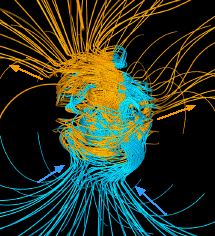
Magnetospheres are generated with 1.) magnetic materials and 2.) with motions within the magnetic material. As long as a planet has these two ingredients scientists believe that it can generate a magnetic
...more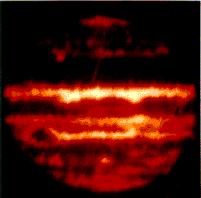
The picture shows places on Jupiter which are hot. Jupiter is a very warm body in space, as shown in the picture, and this warmth is associated with the energy of Jupiter. Neptune has also been found to
...more
Motions in the interior of a planet help carry heat from the inside to the outside. The drawing to the left illustrates a kind of global motion that is typical of motions in the atmosphere as well as interior
...more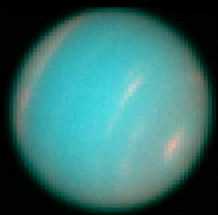
This image shows the new Great Dark Spot of Neptune, which was discovered using the Hubble Space Telescope. The image shown here, shows a "hole" in the clouds of Neptune in pink, in the northern hemisphere,
...more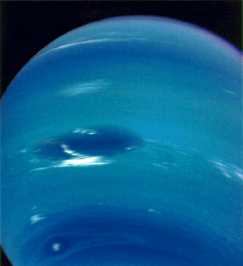
The giant planets have definitely changed since their formation. But how much remains to be seen. Most of the original air of the giant planets remains in place. (The earth-like planets lost most of their
...more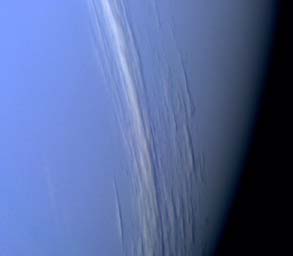
This image shows some clouds known as "cirrus" clouds, extending for many kilometers across the face of Neptune. These clouds are very high up, for they can be seen to cast shadows on the lower clouds,
...more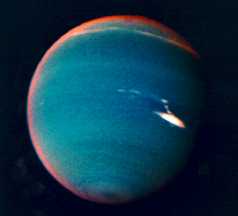
This image of Neptune uses false colors to show where the smog is. The smog of Neptune can be seen in red along the edge of the image. These hazes of smog are found at very high altitudes, over the clouds
...more














